Landlords Need To Be Aware Of The Recent EPA RRP Rules
 Being a landlord brings with it many legal responsibilities related to lead paint that, if not followed, can certainly eat away at any potential profits. There are many rules to consider and be aware of, the most common being the lead disclosure rules. Federal rules are one thing, but different rules in different states and different cities can make it quite difficult for landlords to be confident they are complying. Ignorance of the rules is not an excuse.
Being a landlord brings with it many legal responsibilities related to lead paint that, if not followed, can certainly eat away at any potential profits. There are many rules to consider and be aware of, the most common being the lead disclosure rules. Federal rules are one thing, but different rules in different states and different cities can make it quite difficult for landlords to be confident they are complying. Ignorance of the rules is not an excuse.
Lead disclosure related rules effecting landlords have been around for some time now. Still, many landlords are not aware of them and even many who are aware have been getting away with ignoring them. The EPA typically only proactively audits “bigger fish”, like large apartment complex owners, rather than landlords with fewer properties. However, when tenants complain about or sue a landlord, their lawyers will often also use lead disclosure compliance as an additional weapon in their arsenal. Now there is a new weapon tenants and their lawyers can use as well.
Many landlords are not aware of the new RRP Lead rule which must be followed when repairs, renovations, painting and or maintenance is done on their rental properties. In addition to certain required lead-safe work practices, the RRP rule also includes building occupant notification requirements. These requirements must be met when working in a tenant’s unit and or if work is to be done in common areas on or in the rental property. The rule requires that tenants be made aware of the work to be done and where it will be done in advance of starting the work. Click here to access a list of short videos explaining the RRP Rule.
 When work is done inside their units, tenants must be given an EPA published pamphlet titled “Renovate Right”. The pamphlet explains the dangers of lead and what is required to protect their and their family’s health and safety when work is being done at the property where they live. If work is to be done in common areas, the pamphlet can either be given to tenants, or, notices can be posted telling tenants how they can receive the pamphlet at no cost to them. Tenants must also be given or made aware how they can request a document titled the “Renovation Checklist”. The checklist documents the work done and the lead safe work practices used to do the work. Under the rule the landlord must maintain documentation proving these and other requirements were met.
When work is done inside their units, tenants must be given an EPA published pamphlet titled “Renovate Right”. The pamphlet explains the dangers of lead and what is required to protect their and their family’s health and safety when work is being done at the property where they live. If work is to be done in common areas, the pamphlet can either be given to tenants, or, notices can be posted telling tenants how they can receive the pamphlet at no cost to them. Tenants must also be given or made aware how they can request a document titled the “Renovation Checklist”. The checklist documents the work done and the lead safe work practices used to do the work. Under the rule the landlord must maintain documentation proving these and other requirements were met.
 If the landlord does his own work on the rental property and or uses his/her own employees to do so, the landlord must also become an EPA Certified RRP firm and only use trained and certified workers to do the work. If you are a landlord doing your own work, click here to see the list of documentation you are required to create and store. If the landlord hires a contractor to do the work, the landlord does not need to be certified, but the contractor doing the work does. If a contractor does the work, the landlord is responsible to obtain from the contractor and store all documentation required under the rule. For violations of the RRP rules landlords can be fined up to $37,500 per day, per violation.
If the landlord does his own work on the rental property and or uses his/her own employees to do so, the landlord must also become an EPA Certified RRP firm and only use trained and certified workers to do the work. If you are a landlord doing your own work, click here to see the list of documentation you are required to create and store. If the landlord hires a contractor to do the work, the landlord does not need to be certified, but the contractor doing the work does. If a contractor does the work, the landlord is responsible to obtain from the contractor and store all documentation required under the rule. For violations of the RRP rules landlords can be fined up to $37,500 per day, per violation.
***Keep in mind that the RRP fines will be in addition to any fines related to disclosure rules.
Some states have taken over administration and enforcement of the rule from EPA. Make sure you know what specific rules apply to your situation depending on where the property is located. Click here to see a list of states that have taken over the rule. If you are a landlord seeking more information about the RRP rule use the tags on the right side of this page to help you find specific information and topics. Be sure to subscribe to this page if you would like to receive e-mail notification of new posting related to the RRP rule as they happen. Feel free to share this information with others.

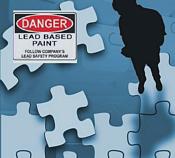 Looking for accurate information about the EPA RRP rule?
Looking for accurate information about the EPA RRP rule?  NOTE: If you are a landlord, realtor or member of a group representing landlords or realtors seeking help and information about the RRP rules, feel free to
NOTE: If you are a landlord, realtor or member of a group representing landlords or realtors seeking help and information about the RRP rules, feel free to  The New Renovation Repair and Painting Rule could likely be a ticking time bomb for many renovators who are ignorant of, intentionally ignoring and or not following all of the many requirements of the rule. The reason I say this is because of the documentation and record keeping requirements of the RRP Rule. Renovators should keep in mind that under the rule the required documentation for each RRP project must be stored and made available for inspection for up to 3 years after the completion of the project. The EPA and or states that have taken over administration and enforcement of the rule won’t be limited to finding active violations of the rule on jobsites. They will also be able to use the required documentation to determine whether renovators were complying with the rule on all projects completed in the three years preceding an inspection. Check out this
The New Renovation Repair and Painting Rule could likely be a ticking time bomb for many renovators who are ignorant of, intentionally ignoring and or not following all of the many requirements of the rule. The reason I say this is because of the documentation and record keeping requirements of the RRP Rule. Renovators should keep in mind that under the rule the required documentation for each RRP project must be stored and made available for inspection for up to 3 years after the completion of the project. The EPA and or states that have taken over administration and enforcement of the rule won’t be limited to finding active violations of the rule on jobsites. They will also be able to use the required documentation to determine whether renovators were complying with the rule on all projects completed in the three years preceding an inspection. Check out this I had a conversation with one remodeler about the serious risks non-compliance can have for a renovator’s business. His opinion was that the risk of being caught was dependent on “how legal” the remodeler is in the way he/she operates the business. My opinion is that being legal is not measured on any kind of graduated scale. You are either operating the business legally or you are not. I think both EPA and OSHA agree with this logic.
I had a conversation with one remodeler about the serious risks non-compliance can have for a renovator’s business. His opinion was that the risk of being caught was dependent on “how legal” the remodeler is in the way he/she operates the business. My opinion is that being legal is not measured on any kind of graduated scale. You are either operating the business legally or you are not. I think both EPA and OSHA agree with this logic.  On December 2nd, 2010 I attended an
On December 2nd, 2010 I attended an  At the workshop Joe Ceccarelli, a trainer with Safety Trainers, shared some information with the attendees regarding OSHA’s plans to step up inspections and increase fine amounts related to the residential construction Industry. He told us that OSHA Region 1 has hire 250 new additional field inspectors and 40 of those have been assigned to Massachusetts alone. I was quite taken back when Joe told us he had learned that 72% of OSHA violations levied against residential construction businesses were for what OSHA calls “serious or willful violations” and resulted in fines ranging from $3000 to $70,000.
At the workshop Joe Ceccarelli, a trainer with Safety Trainers, shared some information with the attendees regarding OSHA’s plans to step up inspections and increase fine amounts related to the residential construction Industry. He told us that OSHA Region 1 has hire 250 new additional field inspectors and 40 of those have been assigned to Massachusetts alone. I was quite taken back when Joe told us he had learned that 72% of OSHA violations levied against residential construction businesses were for what OSHA calls “serious or willful violations” and resulted in fines ranging from $3000 to $70,000. 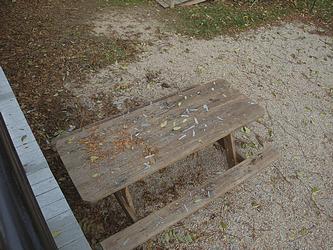
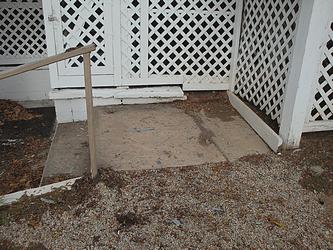 This is an excellent observation and question. The liability in such a situation is huge. I just recently had a conversation about this topic with an attorney well familiar with the RRP rule. Her suggestion was to consider asking the home owner to do testing of the occupants and perhaps even dust wipe testing at the home before beginning any work to establish a point of reference. Discussing this with and asking the home owner to do so would obviously be a sensitive conversation and could likely be a tough sell for many contractors.
This is an excellent observation and question. The liability in such a situation is huge. I just recently had a conversation about this topic with an attorney well familiar with the RRP rule. Her suggestion was to consider asking the home owner to do testing of the occupants and perhaps even dust wipe testing at the home before beginning any work to establish a point of reference. Discussing this with and asking the home owner to do so would obviously be a sensitive conversation and could likely be a tough sell for many contractors.
 Deleading under the MA Lead Law requires the removal or covering of
Deleading under the MA Lead Law requires the removal or covering of  At a recent
At a recent 
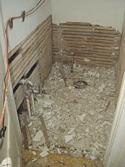 According to
According to  Although I agree renovators should be required to work lead-safe, I suggest that the RRP rule falls way too short in preventing lead poisoning. Allowing home owners and tenants to do RRP work without the knowledge and proper training required should be considered a travesty. Without understanding how lead poisoning happens and how to perform the work in a lead-safe manner, these parents are often unknowingly poisoning their children.
Although I agree renovators should be required to work lead-safe, I suggest that the RRP rule falls way too short in preventing lead poisoning. Allowing home owners and tenants to do RRP work without the knowledge and proper training required should be considered a travesty. Without understanding how lead poisoning happens and how to perform the work in a lead-safe manner, these parents are often unknowingly poisoning their children. I recently completed a series of seven videos about the new EPA RRP rule. The RRP videos were done for Remodeling magazine. They are posted to the Remodeling TV area of Remodeling magazine’s web site.
I recently completed a series of seven videos about the new EPA RRP rule. The RRP videos were done for Remodeling magazine. They are posted to the Remodeling TV area of Remodeling magazine’s web site. writing the script, interviewing contributors, editing the script with the magazine’s editor Sal Alfano, reviewing the raw footage, and working with the videographer,
writing the script, interviewing contributors, editing the script with the magazine’s editor Sal Alfano, reviewing the raw footage, and working with the videographer, 
 Although every “legal” remodeler I have spoken to expresses concerns about illegal competition doing their work in violation of the RRP rule, these remodelers are split about whether to report their illegal completion or not. At the Opening Session I presented on Thursday morning at the Remodeling Show I offered my point of view on this. I suggested that illegal contractors and the home owners who hire them are stealing business and money away from legal remodelers and their employees. I gave the example that if you or I steal a TV from someone and get caught, we must return the TV and suffer any consequences. If an illegal contractor or home owner steals a deck job from a legal contractor little or nothing is ever done and the home owner gets to keep the deck. How long will our industry and the trade associations that represent us tolerate this? Just like with illegal immigration, because our government does not enforce existing rules and laws on a consistent basis, illegal contractors operate with little fear of being caught and even if caught, have little fear of any consequences.
Although every “legal” remodeler I have spoken to expresses concerns about illegal competition doing their work in violation of the RRP rule, these remodelers are split about whether to report their illegal completion or not. At the Opening Session I presented on Thursday morning at the Remodeling Show I offered my point of view on this. I suggested that illegal contractors and the home owners who hire them are stealing business and money away from legal remodelers and their employees. I gave the example that if you or I steal a TV from someone and get caught, we must return the TV and suffer any consequences. If an illegal contractor or home owner steals a deck job from a legal contractor little or nothing is ever done and the home owner gets to keep the deck. How long will our industry and the trade associations that represent us tolerate this? Just like with illegal immigration, because our government does not enforce existing rules and laws on a consistent basis, illegal contractors operate with little fear of being caught and even if caught, have little fear of any consequences.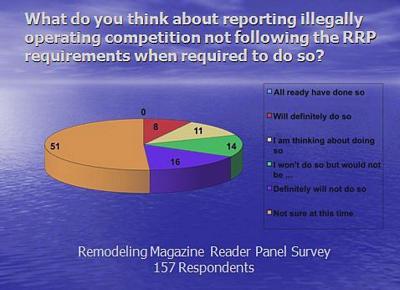
 As we all wait to see what happens with the economy and how long a real recovery will take, I predict that their ability to pay their mortgage and put food on the family table will persuade many remodeling business owners to take action and defend their ability to run honest businesses.
As we all wait to see what happens with the economy and how long a real recovery will take, I predict that their ability to pay their mortgage and put food on the family table will persuade many remodeling business owners to take action and defend their ability to run honest businesses. If home buyers aren’t aware of lead paint or the implications of buying a property that has or may have lead paint, a good home inspector may likely provide such knowledge.
If home buyers aren’t aware of lead paint or the implications of buying a property that has or may have lead paint, a good home inspector may likely provide such knowledge.  Home inspectors will help cause compliance with the EPA RRP rule in a few ways. First, they will likely make home buyers aware of the fact that if built before 1978, the home may likely contain lead paint. The only way to verify if lead paint is present is to do a lead test. Inspectors can suggest their clients ask the seller if the home has been tested and if it has to obtain a copy of the required lead inspection report. Next, if the home does have lead, or it hasn’t been tested, inspectors should inform the buyers that any renovations to the home would need to be done using lead-safe work practices. This will have two effects. The first would be to let the buyer know that lead-safe work practices are required should they be planning any renovations after purchasing the home. Second, and most critical, would be to verify that any recent renovations done at the home were done using lead-safe work practices and to verify this by making sure who ever did the work did it in compliance with the EPA RRP requirements. Again, requesting a copy of the
Home inspectors will help cause compliance with the EPA RRP rule in a few ways. First, they will likely make home buyers aware of the fact that if built before 1978, the home may likely contain lead paint. The only way to verify if lead paint is present is to do a lead test. Inspectors can suggest their clients ask the seller if the home has been tested and if it has to obtain a copy of the required lead inspection report. Next, if the home does have lead, or it hasn’t been tested, inspectors should inform the buyers that any renovations to the home would need to be done using lead-safe work practices. This will have two effects. The first would be to let the buyer know that lead-safe work practices are required should they be planning any renovations after purchasing the home. Second, and most critical, would be to verify that any recent renovations done at the home were done using lead-safe work practices and to verify this by making sure who ever did the work did it in compliance with the EPA RRP requirements. Again, requesting a copy of the  Additionally, if the work was done by the home owners themselves, or perhaps was done illegally by a non-complaint contractor, the only way to find out if the work may have contaminated the home with lead would be to have the home tested by a
Additionally, if the work was done by the home owners themselves, or perhaps was done illegally by a non-complaint contractor, the only way to find out if the work may have contaminated the home with lead would be to have the home tested by a 


